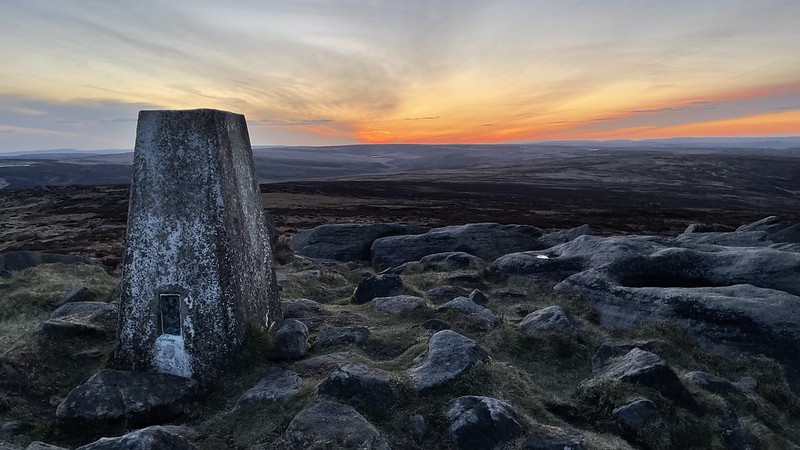
Awe walks boost emotional well-being according to a recent study conducted by researchers from UC San Francisco and Trinity College Dublin. The study looked at the effect of a weekly 15 minute walk on adults in which selected walkers reported positive effects on their emotional well-being and stress levels.
The walkers were asked to focus on their surroundings rather than themselves and this connects with several activities and studies that I have discussed here previously. I have not, however, presented the well-being benefits enough perhaps, though during the pandemic I have thought about the benefit of regular awe walking (it’s good to have a name for it) for myself and, if I’d had the time, I would have advocated using the Twalk method more during this time. In fact, I have done several workshops on Unified Active Learning in which I have promoted Twalks as one of several innovative approaches to ‘Creating Some Warmth Through Active Learning’ (Global Festival of Active Learning) – Twalks (social media semi-structed walking conversations) can bring students together even when they are geographically dispersed.
There are social benefits from learning walks, though the study on awe walks focuses on the individual. Being part of something provides the individual with a way to come to know themselves – that something can be the wonder of the material world or the social world. The study does not distinguish between the rural or urban landscape – awe is wherever we look for it. That is the message: walk purposefully and look out for things that may be common place but which, on further scrutiny, may surprise you. As an art student I was trained to do that, but I think there is a strong message here for any educator and student: learning to look deeply promotes creative and critical thinking habits.
I live in a West Yorkshire town that is neither simply urban nor rural. I walk every day. I do the minimum 10,000 steps and more during the week, although this often involves road walking. I take pictures and listen to podcasts on my walks. I have walked these roads so many times that you have to scour the landscape to find a new image. Often it will be the shadows, vibrant night colours, textures and the negative spaces, not only the objects, that catch my eye. At weekends I range across the Pennines feeling the awe of the hills, the moors, the reservoirs, canals, and cloudscapes and sunsets. During the week, after a long working day when the nights extend too far, it can be a struggle to work out where to go to find awe. I need an ulterior purpose. Ulterior, meaning being beyond what is seen or intentional, seems apt. If necessary I will just walk to tick off the steps, but I much prefer a purpose, a destination or an idea. As part of my walking routine I have the mission of taking at least one photograph and posting it to my Instagram account. Having an excellent smartphone camera that copes admirably with my #nightwalk scenes really helps.

I notice that such walking has its risks and dangers. Being on the street at night on your own is not for everyone, to say the least. Being on the moors at night can also bring dangers. I nearly got stuck on Holme Moss recently having got lost in thought and wonder.

The sublime
Awe is an unusual word. Perhaps this is because we don’t tend to positively experience awe when we are caught up in the ‘day to day’ business of living. We don’t tend to talk about it. The study on awe walks implies we should be conscious of awe. Being awestruck is good for us.
Philosophize This!, presented by the excellent Stephen West, is one podcast I take with me. When walking on the hills around Peel Tower in Lancashire a few weekends ago I listened to the episode on Kant and the Sublime (connecting places to listening is a topic I have written on with my former colleague Anne Nortcliffe).
The sublime is a rare experience of the world at the extreme. It is more than awe, indeed it can be threatening, creating a sensation of humility that challenges the human tendencies of arrogance and omnipotence. In comparison, awe can be stupendous but commonplace and available to those who go looking with their senses open.
Bringing it back to learning
Good learning can be defined as that which satisfies curiosity. For good learning we need awe inspiring moments.
We can get these moments from excellent teachers, but as learners we should aspire to inspire too. Looking with the artist’s eye for both detail and that expansive sense of immersion, and becoming practised in navigating between these extremes, is something we can all develop and bring to our study and to our world views.
I have talked about looking deeply with the artist’s eye, but previously I have made similar points about using our aural senses and thinking about how we can use audio as active ‘learner gatherers’ (Middleton, 2011). Whether through isolated wandering psychogeographical expeditions or more purposeful or social meanderings such as learning walks and twalks, well-being can come from finding awe.
Reference
Middleton, A. (2011). Audio Active: Discovering Mobile Learner-Gatherers from Across the Formal-Informal Continuum. International Journal of Mobile and Blended Learning (IJMBL), 3(2), 31–42. https://doi.org/10.4018/jmbl.2011040103.
Nortcliffe, A. & Middleton, A. (2008). A three year case study of using audio to blend the engineer’s learning environment. Engineering Education: Journal of the Higher Education Academy Engineering Subject Centre, 3(2).

Pingback: Education as a liminal state | Tactile